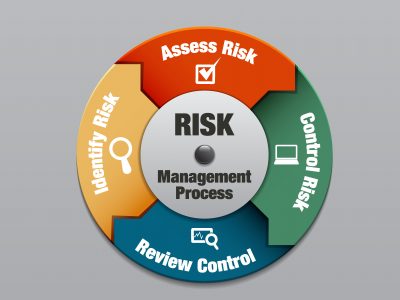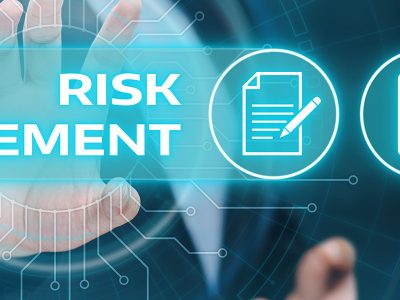Mitigation of threats as well as identification of relevant opportunities, albeit the risks, are the answers to the success of any business. Individual threats are more often than not potentially related and thus consolidation and analysis of risks within the organisation as a whole, rather than handling them individually can help effectively manage the risk scenario of the firm as well as create a competitive edge in the industry.
Enterprise Risk Management involves the processes and methods used by companies to mitigate and control risks that affect the day-to-day operations, finances, and strategies within the organisation as well as control the impact of any unforeseen event. ERM facilitates the identification of potential threats and opportunities relevant to the organisation and assessments of the same in terms of impact, preparation of a response strategy to tackle the threats, as well as monitoring progress.
Objectives of an ERM Program:
- Improving and empowering the risk management capabilities already present within the
- Coordinating with various verticals of the and integrating the risk assessment from these verticals.
- Consolidation of the output to provide a complete picture to the various stakeholders and ultimately improving the firm’s ability to manage risks
Significance of ERM for Start-ups
While every company, be it a large conglomerate or a small company, faces risks; entrepreneurship is essentially based on the foundation of taking huge risks and thus start-ups are more prone to risks than any bigger organisation. The main reason being the capital raised by large firms gives them ample opportunities as well as resources to set up risk management and threat mitigation strategies in place, which is missing in most start-ups.
Start-ups are prone to certain risks such as the lack of sufficient capital, inability to attract customers as well as talented workforce, competition within the industry, insufficient liquidity at times etc. by virtue of being new to the market. Thus, it becomes imperative for them to set up measures to effectively manage and mitigate such situations to survive and thrive in the industry.
Entrepreneurs, now, must understand that investors are no longer looking at basic revenue predictions or estimates. They look at sustainability, the overall risk management approach, and the start-up’s ability to effectively recover from significant issues or disruptions.
Setting up ERM for start-ups
- Increasing Risk literacy within the organisation: Start-up risk literacy is important to predict potential threats faced by the organisation and tackle such situations by making necessary Risk awareness allows organisations and their key personnel to develop a capable risk culture within the organisation as well as improve decision-making regarding threats and opportunities. While large organisations have the capabilities to hire experienced risk professionals, start- ups, owing to financial reasons, have to be dependent on their core leadership to manage the various risks faced from time to time. In such a situation, it is ideal that a senior person in the organisation assumes the risk assessment role. Apart from his/her core competencies within the organisation, this person should assess internal and external risks on a regular basis, based on techniques such as scenario planning (analysing hypothetical situations with varying outcomes and the factors leading to a desirable or an undesirable outcome and ultimately making decisions to prevent worst-case scenarios) and horizon scanning (examining latest trends to analyse the likely impact it would have on the organisation and thus preparing mitigation plans to avoid any crisis situation that may arise due to these developments).
- Outsourcing risk management functions: Start-ups usually have low risk appetite as well as less defences put in place during the times of uncertainty. Thus, they are mostly the first to be adversely affected. Thus, periodic risk assessment is one of the practices that should be implemented by all start-ups. This could be either outsourced to risk professionals or software solutions such as ERM. Risk professionals conduct a full-blown operational survey of the organisation based on the current opportunity level in the industry, customer reach of the start-up and future expansion plans from the leadership. Outsourcing this function not only enables the organisation to limit their costs in risk management, but also let them focus on their core business operations. Additional benefits include cyber security, formulation of Business Continuity Plans (BCPs), mitigation of systemic risks, etc.
- Devising a framework of risk management in start-ups: Enterprise risk management is carried out through a risk assessment process or plan. It makes sure that risk is systematically approached across the firm, considering the risk appetite of the organisation, and pointing out how the three lines of protection (business, risk, audit) link together to handle risk effectively. This process should call for risk assessment to be at the forefront of all business-critical. Start-ups that do not want to invest in outsourcing their risk functions should implement technological solutions within their organisation. These solutions should integrate the data from within the entire organisation, and prepare reports based on the trends in the industry as well as the current position of the organisation. As threats from various verticals are mostly related, the integrated report is a more effective way of handling risks within the organisation rather than handling individual threats.
It is important for modern entrepreneurs to understand that risks are an inevitable part of business and its better to have measures planned to avoid or mitigate these as much as possible. An effective Enterprise Risk Management System helps achieve this objective and thus minimises the hurdles in operations and the damages start-ups take when faced with uncertainties.
Submitted By: Abhijeet Kothiyal, Member of Student Risk Club (SRC)












